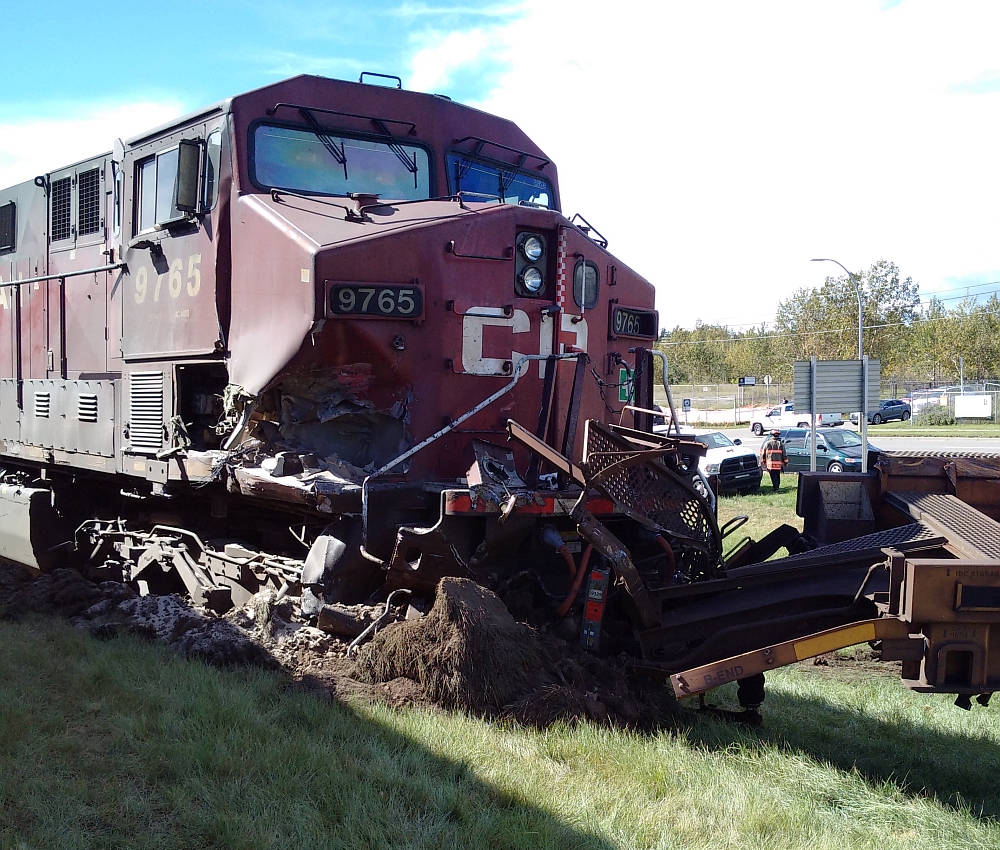Non-main-track train collision and derailment
Canadian Pacific Railway
Freight trains 303-646 and 113-31
Mile 171.7, Brooks Subdivision
Calgary, Alberta
The occurrence
On , Canadian Pacific Railway (CP) train 303 collided with CP train 113 at Mile 172, on the Brooks Subdivision in Calgary, Alberta. Train 113 was stopped with the head-end of the train at Alyth Yard and the tail-end south of the 50th Avenue overpass. As train 303 came around a curve, the crew observed the tail-end of train 113. The crew on train 303 initiated an emergency brake application. But, unable to stop, train 303 collided with the tail-end of train 113. Both locomotives and the first 2 cars on train 303 derailed, along with the tail-end car of train 113, a 3-platform container car. There were no injuries and there was no release of dangerous goods.
Media materials
News releases
TSB releases investigation report into September 2016 collision and derailment involving two trains in Calgary, Alberta
Read the news release
Deployment notice
TSB deploys a team of investigators to a rail accident in Calgary Alberta
The Transportation Safety Board of Canada (TSB) deploys a team of investigators to a Canadian Pacific Railway accident that occurred in the Alyth rail yard in Calgary, Alberta. The TSB will gather information and assess the occurrence.
Investigation information
Download high-resolution photos from the TSB Flickr page.
Class of investigation
This is a class 3 investigation. These investigations analyze a small number of safety issues, and may result in recommendations. Class 3 investigations are generally completed within 450 days. For more information, see the Policy on Occurrence Classification.
TSB investigation process
There are 3 phases to a TSB investigation
- Field phase: a team of investigators examines the occurrence site and wreckage, interviews witnesses and collects pertinent information.
- Examination and analysis phase: the TSB reviews pertinent records, tests components of the wreckage in the lab, determines the sequence of events and identifies safety deficiencies. When safety deficiencies are suspected or confirmed, the TSB advises the appropriate authority without waiting until publication of the final report.
- Report phase: a confidential draft report is approved by the Board and sent to persons and corporations who are directly concerned by the report. They then have the opportunity to dispute or correct information they believe to be incorrect. The Board considers all representations before approving the final report, which is subsequently released to the public.
For more information, see our Investigation process page.
The TSB is an independent agency that investigates air, marine, pipeline, and rail transportation occurrences. Its sole aim is the advancement of transportation safety. It is not the function of the Board to assign fault or determine civil or criminal liability.
